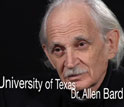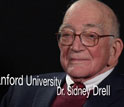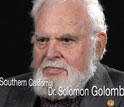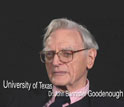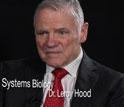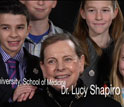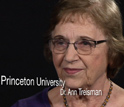News Release 13-016
President Obama Awards Nation's Top Scientists and Innovators Highest Honor
Almost all awardees have received NSF support at some point in their research careers
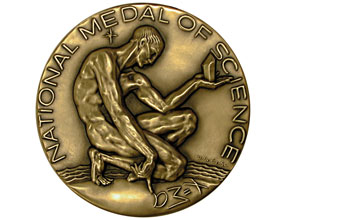
The National Medal of Science was first presented 50 years ago by President John F. Kennedy.
February 1, 2013
This material is available primarily for archival purposes. Telephone numbers or other contact information may be out of date; please see current contact information at media contacts.
President Obama today awarded 12 eminent researchers the National Medal of Science and 11 extraordinary inventors the National Medal of Technology and Innovation, the highest honors bestowed by the U.S. government upon scientists, engineers and inventors. The recipients received their awards at a White House ceremony. This marks the 50th anniversary of the presentation of the first National Medals of Science in 1963 by President John F. Kennedy.
"I am proud to honor these inspiring American innovators," Obama said when the awardees were announced. "They represent the ingenuity and imagination that has long made this nation great--and they remind us of the enormous impact a few good ideas can have when these creative qualities are unleashed in an entrepreneurial environment."
"Your discoveries and innovation nourish the prosperity, security and well-being of our country, and they will provide inspiration for future ground-breaking work by scientists and innovators for generations to come," said NSF Director Subra Suresh. "I thank you on behalf of NSF and a proud nation."
The president spoke of the importance of "lending a hand" to promising scientists and engineers so that they may pursue research and contribute to their fields.
Among this year's 12 recipients of the National Medal of Science, 92 percent have received NSF support at some point in their research careers, for a cumulative support of over $60 million.
Administered for the White House by the National Science Foundation, the National Medal of Science was established by the 86th Congress in 1959 as a presidential award to be given to individuals "deserving of special recognition by reason of their outstanding contributions to knowledge in the physical, biological, mathematical or engineering sciences." In 1980 Congress expanded this recognition to include the social and behavioral sciences.
A committee of 12 scientists and engineers is appointed by the president to evaluate the nominees for the award. Since its establishment, the National Medal of Science has been awarded to 468 distinguished scientists and engineers whose careers spanned decades of research and development. The recipients database, with information from 1962 to the present, is searchable by name, affiliation and other criteria.
The names, affiliations, award citations and short biographies of this year's National Medal of Science Laureates follow:
Allen J. Bard - The University of Texas at Austin
For contributions in electrochemistry, including electroluminescence, semiconductor photoelectrochemistry, electroanalytical chemistry and the invention of the scanning electrochemical microscope
Chemist Allen Bard, has spent his entire career at the University of Texas at Austin. He joined the faculty in 1958 and has served as the Hackerman-Welch Regents Chair in Chemistry since 1985. His publications include three books, more than 800 peer-reviewed research papers and 75 book chapters. He has received more than 23 patents and has served as editor-in-chief of the Journal of the American Chemical Society for nearly two decades.
Sallie W. Chisholm - Massachusetts Institute of Technology
For contributions to the discovery and understanding of the dominant photosynthetic organisms in the ocean, promotion of the field of microbial oceanography and influence on marine policy and management
Biological oceanographer Sallie Chisholm explores microbial ecology, ecological genomics and marine cyanobacteria. Her early research focused on the processes by which marine phytoplankton take up nutrients that affect their growth. Her work led to the discovery that a large part of marine productivity is carried out by extremely small phytoplankton. Unknown until 1988, these tiny microbes are the most abundant photosynthetic cells on Earth, and an essential component of the ocean carbon cycle. Chisholm, who is now the Lee and Geraldine Martin Professor of Environmental Studies and a professor of Biology at MIT, also helps to inform public policy on climate change and the oceans.
Sidney Drell - Stanford University
For contributions to quantum field theory and quantum chromodynamics, application of science to inform national policies in security and intelligence and distinguished contributions as an advisor to the United States Government
Theoretical physicist and arms control expert Sidney Drell is most notably recognized for his contributions in the Drell-Yan Process, which studies both fixed-target and collider experiments and provides insight for calculating essentially all processes at hadron colliders. He is a professor and deputy director emeritus of the SLAC National Accelerator Laboratory at Stanford, and senior fellow at the Hoover Institution.
Sandra Faber - University of California, Santa Cruz
For leadership in numerous path-breaking studies of extra-galactic astronomy and galaxy formation and for oversight of the construction of important instruments, including the Keck telescopes
Astronomer Sandra Faber is a professor of astronomy and astrophysics at the University of California Observatories and the Lick Observatory. Her research, which focuses on the formation and evolution of galaxies and the evolution of structures in the universe, has revolutionized the way cosmologists understand and model the universe. She leads a Hubble Space Telescope project designed to give scientists a view of galaxy formation nearly as far back as the Big Bang.
Sylvester James Gates - University of Maryland, College Park
For contributions to the mathematics of supersymmetry in particle, field and string theories and extraordinary efforts to engage the public on the beauty and wonder of fundamental physics
Theoretical physicist Sylvester James Gates Jr. is the John S. Toll Professor of Physics at the University of Maryland, College Park. He serves on the President's Council of Advisors on Science and Technology and has been extensively featured on NOVA PBS programs on physics, notably "The Elegant Universe" in 2003. Committed to making complicated scientific concepts comprehensible to lay people, he completed a DVD series in 2006 titled Superstring Theory: The DNA of Reality and appeared in the 2012 BBC Horizon documentary The Hunt for Higgs.
Solomon W. Golomb - University of Southern California
For pioneering work in shift register sequences that changed the course of communications from analog to digital and for numerous innovations in reliable and secure space, radar, cellular, wireless and spread-spectrum communications
Mathematician and engineer Solomon Wolf Golomb is a professor of electrical engineering at the University of Southern California. Golomb is an expert in satellite communications technology and played a key role in formulating the design of deep-space communications for lunar and planetary explorations. He is best known to the general public and fans of mathematical games as the inventor of polyominoes, the inspiration for the computer game Tetris. He specializes in problems of combinatorial analysis, number theory, coding theory and communications.
John B. Goodenough - The University of Texas at Austin
For groundbreaking cathode research that led to the first commercial lithium ion battery, which has since revolutionized consumer electronics with technical applications for portable and stationary power
Solid-state physicist John Bannister Goodenough is a professor of mechanical engineering and materials science at UT Austin. He is known for developing the Li-ion rechargeable battery, as well as for developing the Goodenough-Kanamori rules for determining the sign of the magnetic superexchange in materials. Although Sony Corporation is responsible for the commercialization of technology for lightweight rechargeable batteries now ubiquitous in today's portable electronic devices, Goodenough is widely credited for its original identification and development.
M. Frederick Hawthorne - University of Missouri, Columbia
For highly creative pioneering research in inorganic, organometallic and medicinal boron chemistry, sustained and profound contributions to scientific and technical advice related to national security and for effective, prolific and devoted service to the broad field of chemical sciences
Inorganic chemist M. Frederick Hawthorne is the founding director of the University of Missouri International Institute of Nano and Molecular Medicine, and professor of radiology, chemistry and physics at the University of Missouri, Columbia. He is known for his pioneering work in borane chemistry and in the fields of nano and molecular medicine. Hawthorne research significantly contributed to understanding of the chemistry of boron hydride clusters, of great theoretical importance to the chemistry community. Hawthorne was long associated with the journal Inorganic Chemistry, being the longest serving editor-in-chief.
Leroy Hood - Institute for Systems Biology
For pioneering spirit, passion, vision, inventions and leadership combined with unique cross-disciplinary approaches resulting in entrepreneurial ventures, transformative commercial products and several new scientific disciplines that have challenged and transformed the fields of biotechnology, genomics, proteomics, personalized medicine and science education
Biologist Leroy Hood, president and co-founder of the Institute for Systems Biology in Seattle, is recognized as one of the world's leading scientists in molecular biotechnology and genomics. His development of the DNA sequencer, DNA synthesizer and other instruments resulted in the successful mapping of the human genome that revolutionized biomedicine and forensic science. He holds numerous patents and played a role in founding several biotechnology companies. He exhibits a lifelong commitment to making science accessible and understandable to the general public, especially children.
Barry Mazur - Harvard University
For original and landmark contributions to differential topology, number theory and arithmetic algebraic geometry, where, among other applications, his work was foundational to Wiles' proof of Fermat's Last Theorem and for his dedication to communicating subtle mathematical ideas to the broader public
Mathematician Barry Charles Mazur is the Gerhard Gade University Professor of Mathematics at Harvard University. He is known for several foundational discoveries in mathematics: the Mazur manifold--a contractible, compact, smooth 4-dimensional manifold--and the Mazur swindle--a method of proof that involves paradoxical properties of infinite sums. He also proved the Schoenflies conjecture in geometric topology. His research focuses on number theory, automorphic forms and related issues in algebraic geometry.Lucy Shapiro - Stanford University
For the pioneering discovery that the bacterial cell is controlled by an integrated genetic circuit functioning in time and space that serves as a systems engineering paradigm underlying cell differentiation and ultimately the generation of diversity in all organisms
Lucy Shapiro is the Virginia and D.K. Ludwig Professor of Cancer Research and director of the Beckman Center for Molecular and Genetic Medicine at the Stanford University School of Medicine. In her research, she uses Caulobacter, the model organism for the integrated circuitry that runs a bacterial cell cycle, in the hopes of someday defining the complete genetic circuitry linking cell specification.
Anne Treisman - Princeton University
For a 50-year career of penetrating originality and depth that has led to the understanding of fundamental attentional limits in the human mind and brain
Anne Treisman is a psychologist at Princeton University researching visual attention, object perception, conscious awareness and memory. In her career, she proposed ideas that had an enormous impact inside and outside of psychology, including the Feature Integration Theory of attention, which suggests that when perceiving a stimulus, features are "registered early, automatically and in parallel, while objects are identified separately" and at a later stage in processing. Years later, her Feature Integration Theory formed the basis for thousands of experiments in cognitive psychology, vision sciences, cognitive science, neuropsychology and cognitive neuroscience.
Nominations are currently being accepted for next year's National Medal of Science awardees.
The National Medal of Technology and Innovation, also awarded today, was created by statute in 1980 and is administered for the White House by the U.S. Department of Commerce's Patent and Trademark Office. The award recognizes those who have made lasting contributions to America's competitiveness and quality of life and helped strengthen the Nation's technological workforce. Nominees are selected by a distinguished independent committee representing the private and public sectors.2012 National Medal of Technology and Innovation awardees are:
Frances Arnold, California Institute of Technology, Calif.
George Carruthers, U.S. Naval Research Lab, Washington, D.C.
Robert Langer, Massachusetts Institute of Technology, Cambridge, Mass.
Norman McCombs, AirSep Corporation, Buffalo, N.Y.
Gholam Peyman, Arizona Retinal Specialists, Sun City West, Ariz.
Art Rosenfeld, Lawrence Berkeley National Laboratory, Berkeley, Calif.
Jan Vilcek, NYU Langone Medical Center, New York, N.Y.
Team:
Samuel Blum, IBM Corporation, Armonk, N.Y.
Rangaswamy Srinivasan, IBM Corporation, Armonk, N.Y.
James Wynne, IBM Corporation, Armonk, N.Y.
Company:
Raytheon BBN Technologies, Cambridge, Mass. *Represented by CEO, Edward Campbell
For more information on the National Medal of Technology and Innovation please visit its website.
Affiliations listed are the awardees' most recently identified employers; some awardees are now retired.
-NSF-
-
View Video
Chemist Allen Bard is a 2011 National Medal of Science Laureate.
Credit and Larger Version -
View Video
Theoretical physicist and arms control expert Sidney Drell is a 2011 NMS Laureate.
Credit and Larger Version -
View Video
Theoretical physicist Sylvester James Gates is a 2011 National Medal of Science Laureate.
Credit and Larger Version -
View Video
Mathematician and engineer Solomon Wolf Golomb, is a 2011 National Medal of Science Laureate.
Credit and Larger Version -
View Video
Solid-state physicist John B. Goodenough is a 2011 National Medal of Science Laureate.
Credit and Larger Version -
View Video
Molecular biologist and Geneticist Leroy Hood is a 2011 National Medal of Science Laureate.
Credit and Larger Version -
View Video
Lucy Shapiro, here with her four grandchildren, is a 2011 National Medal of Science Laureate.
Credit and Larger Version -
View Video
Psychologist Anne Treisman is a 2011 National Medal of Science Laureate.
Credit and Larger Version
Media Contacts
Lisa-Joy Zgorski, NSF, (703) 292-8311, email: lisajoy@nsf.gov
Program Contacts
Mayra N. Montrose, NSF, (703) 292-4757, email: mmontros@nsf.gov
Related Websites
National Science and Technology Medals Foundation: http://www.nationalmedals.org/medals/science.php
NSF National Medals of Science 50th Anniversary Website: http://www.nsf.gov/news/special_reports/medalofscience50/
The U.S. National Science Foundation propels the nation forward by advancing fundamental research in all fields of science and engineering. NSF supports research and people by providing facilities, instruments and funding to support their ingenuity and sustain the U.S. as a global leader in research and innovation. With a fiscal year 2023 budget of $9.5 billion, NSF funds reach all 50 states through grants to nearly 2,000 colleges, universities and institutions. Each year, NSF receives more than 40,000 competitive proposals and makes about 11,000 new awards. Those awards include support for cooperative research with industry, Arctic and Antarctic research and operations, and U.S. participation in international scientific efforts.
Connect with us online
NSF website: nsf.gov
NSF News: nsf.gov/news
For News Media: nsf.gov/news/newsroom
Statistics: nsf.gov/statistics/
Awards database: nsf.gov/awardsearch/
Follow us on social
Twitter: twitter.com/NSF
Facebook: facebook.com/US.NSF
Instagram: instagram.com/nsfgov

